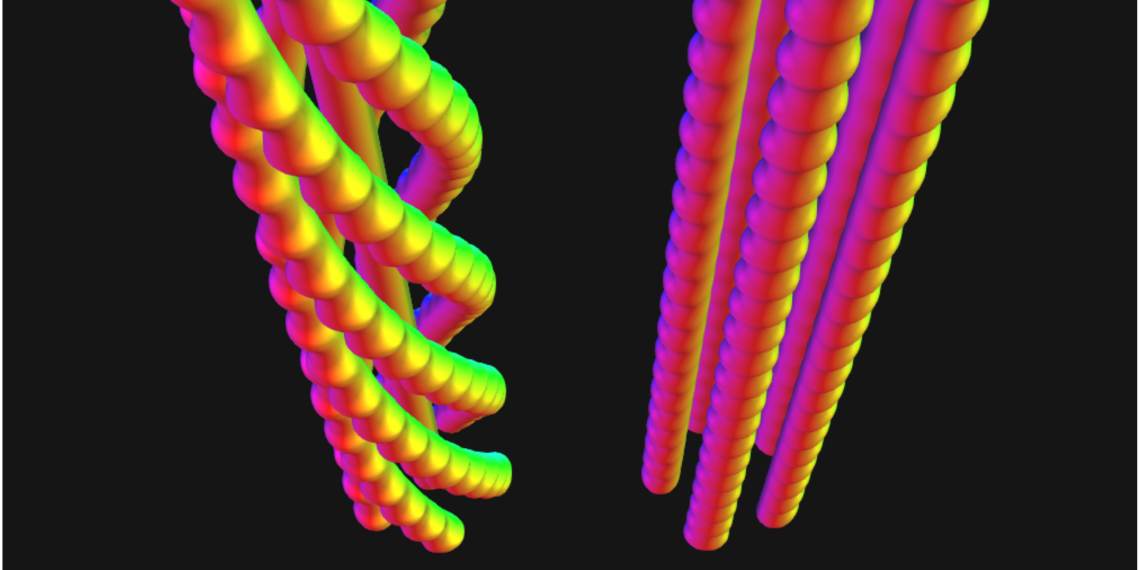A new physical phenomenon has been discovered by a team of scientists from Germany, Sweden and China: complex cord-shaped structures made of skyrmions, tiny magnetic vortices. Skyrmions were first experimentally detected a good 10 years ago and have since been the subject of numerous investigations and a possible basis for innovative concepts for information processing with higher performance and less energy consumption. Moreover, skyrmions influence the magnettoresistive and thermodynamic properties of a material. The discovery therefore has relevance to both applied and fundamental research.
Strings, threads and braid structures are ubiquitous: from the laces in shoes to the wool thread in sweaters, the braid on the head to the steel cable that supports many a bridge. In nature, too, such structures are a common pattern that can, for example, give plant fibers tensile or flexural strength. Physicists at Forschungszentrum Jülich and their team colleagues from Stockholm and Hefei have now discovered such nanoscale structures in alloys of iron and the semimetal germanium.
The nanocords each consist of several skyrmions that are twisted together to a greater or lesser extent, like the strands of a dew. Skyrmions, in turn, consist of magnetic moments that point in different directions and together take the form of an elongated tiny vortex. Each individual skyrmion strand is less than one micrometer in diameter. The length of the magnetic structures is limited only by the thickness of the samples; they extend from one surface of the samples to the opposite one.
Previous studies by other scientists had found such filaments to be largely linear, almost rod-shaped. But ultrahigh-resolution microscopic studies at the Ernst Ruska Center in Jülich and theoretical investigations at the Peter Grünberg Institute in Jülich revealed a more diverse picture: in fact, the filaments can twist together to varying degrees. The complex shapes stabilize the magnetic structures, the researchers say. That makes them particularly interesting for applications.
“Mathematics knows a great variety of such structures. Now we know that this theoretical knowledge can be translated into real physical phenomena. Such structures inside magnetic solids suggest unique electrical and magnetic properties. However, further research is needed to verify this.”
- Dr Nikolai Kiselev
As an explanation for the discrepancy between their studies and previous ones, the researcher points to the fact that ultrahigh-resolution electron microscopy studies do not simply provide an image of the sample, as is known, for example, from an optical microscope. That’s because quantum mechanical phenomena come into play when the high-energy electrons interact with those of the sample.
“It is quite conceivable that other researchers have also seen these structures under the microscope, but have not been able to interpret them. This is because it is not possible to directly infer the distribution of magnetization directions in the sample from the data obtained. Instead, it is necessary to create a theoretical model of the sample of and from this to generate an electron microscopic image, so to speak,” Kiselev explains. “If the theoretical and experimental images match, one can conclude that the model is capable of representing reality.” When it comes to ultrahigh-resolution analyses of this kind, Forschungszentrum Jülich and its Ernst Ruska Center are among the world’s leading institutions.

















